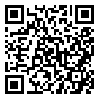Sun, Dec 28, 2025
| فارسی
Volume 29, Issue 3 (Autumn 2023)
IJPCP 2023, 29(3): 320-331 |
Back to browse issues page
Download citation:
BibTeX | RIS | EndNote | Medlars | ProCite | Reference Manager | RefWorks
Send citation to:



BibTeX | RIS | EndNote | Medlars | ProCite | Reference Manager | RefWorks
Send citation to:
Saberizafarghandi M B, Vahed N, Arezoomandan R, Pirmoradi M. The Relationship Between Brain Activity and Craving Among Individuals With Cannabis Use Disorder. IJPCP 2023; 29 (3) :320-331
URL: http://ijpcp.iums.ac.ir/article-1-3963-en.html
URL: http://ijpcp.iums.ac.ir/article-1-3963-en.html
1- Department of Addiction, School of Behavioral Sciences and Mental Health (Tehran Institute of Psychiatry), Iran University of Medical Sciences, Tehran, Iran.
2- Research Center for Addiction and Risky Behaviors (ReCARB), Psychosocial Health Research Institute, Iran University of Medical Sciences, Tehran, Iran. ,vahedneda@iums.ac.ir
3- Department of Clinical Psychology, School of Behavioral Sciences and Mental Health (Tehran Institute of Psychiatry), Iran University of Medical Sciences, Tehran, Iran.
2- Research Center for Addiction and Risky Behaviors (ReCARB), Psychosocial Health Research Institute, Iran University of Medical Sciences, Tehran, Iran. ,
3- Department of Clinical Psychology, School of Behavioral Sciences and Mental Health (Tehran Institute of Psychiatry), Iran University of Medical Sciences, Tehran, Iran.
Abstract: (2208 Views)
Objectives Cannabis is the most commonly used illicit substance in the world. Craving is one of the most important treatment challenges in people with cannabis use disorder. The study aims to evaluate the relationship between brain activity and craving among people with cannabis use disorder.
Methods This is a descriptive-analytical study. Participants were 20 patients with cannabis use disorder, who were selected by a convenience sampling method. Resting-state quantitative electroencephalography (QEEG) data were recorded in resting state with eyes closed and eyes open, and their craving was measured by the marijuana craving questionnaire-short form. The data were analyzed in MATLAB software, version 22.
Results In open eyes conditions, a significant negative correlation was observed between craving and relative power in the theta band, particularly in the frontal and temporal regions (P<0.05). Additionally, in both open and closed eye conditions, a significant positive correlation was identified between craving and relative power in the beta and gamma bands, specifically in the frontal, occipital, and central regions (P<0.05).
Conclusion There is a significant relationship between craving and changes in the activity of different brain regions in people with cannabis use disorder. It is necessary to pay attention to the neurobiological aspects of addiction to cannabis during the treatment process.
Methods This is a descriptive-analytical study. Participants were 20 patients with cannabis use disorder, who were selected by a convenience sampling method. Resting-state quantitative electroencephalography (QEEG) data were recorded in resting state with eyes closed and eyes open, and their craving was measured by the marijuana craving questionnaire-short form. The data were analyzed in MATLAB software, version 22.
Results In open eyes conditions, a significant negative correlation was observed between craving and relative power in the theta band, particularly in the frontal and temporal regions (P<0.05). Additionally, in both open and closed eye conditions, a significant positive correlation was identified between craving and relative power in the beta and gamma bands, specifically in the frontal, occipital, and central regions (P<0.05).
Conclusion There is a significant relationship between craving and changes in the activity of different brain regions in people with cannabis use disorder. It is necessary to pay attention to the neurobiological aspects of addiction to cannabis during the treatment process.
Type of Study: Original Research |
Subject:
Psychiatry and Psychology
Received: 2023/07/28 | Accepted: 2023/08/18 | Published: 2023/10/1
Received: 2023/07/28 | Accepted: 2023/08/18 | Published: 2023/10/1
| Rights and permissions | |
 |
This work is licensed under a Creative Commons Attribution-NonCommercial 4.0 International License. |






